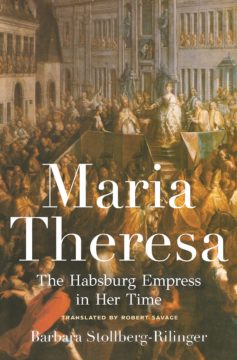John Adamson at Literary Review:
 Understanding this complex tangle of overlapping titles and jurisdictions is here essential. For although Maria Theresa was sovereign in her own right of the archduchy of Austria and queen of Hungary, in legal theory she ranked lower than her husband, the newly elected emperor. Yet having regained her realms as a woman against one set of male rivals, Maria Theresa was determined not to cede authority to another set closer to home. She insisted that her power within her inherited possessions was absolute. Stollberg-Rilinger argues that even within the Holy Roman Empire, nominally her husband’s domain, it was Maria Theresa, not the emperor, who decided the direction of policy. This female primacy would be continued, with even sharper resentment on the part of the subordinated male, after Francis’s death in 1765 and the election of her eldest son, Joseph II, as his successor as Holy Roman Emperor.
Understanding this complex tangle of overlapping titles and jurisdictions is here essential. For although Maria Theresa was sovereign in her own right of the archduchy of Austria and queen of Hungary, in legal theory she ranked lower than her husband, the newly elected emperor. Yet having regained her realms as a woman against one set of male rivals, Maria Theresa was determined not to cede authority to another set closer to home. She insisted that her power within her inherited possessions was absolute. Stollberg-Rilinger argues that even within the Holy Roman Empire, nominally her husband’s domain, it was Maria Theresa, not the emperor, who decided the direction of policy. This female primacy would be continued, with even sharper resentment on the part of the subordinated male, after Francis’s death in 1765 and the election of her eldest son, Joseph II, as his successor as Holy Roman Emperor.
more here.
